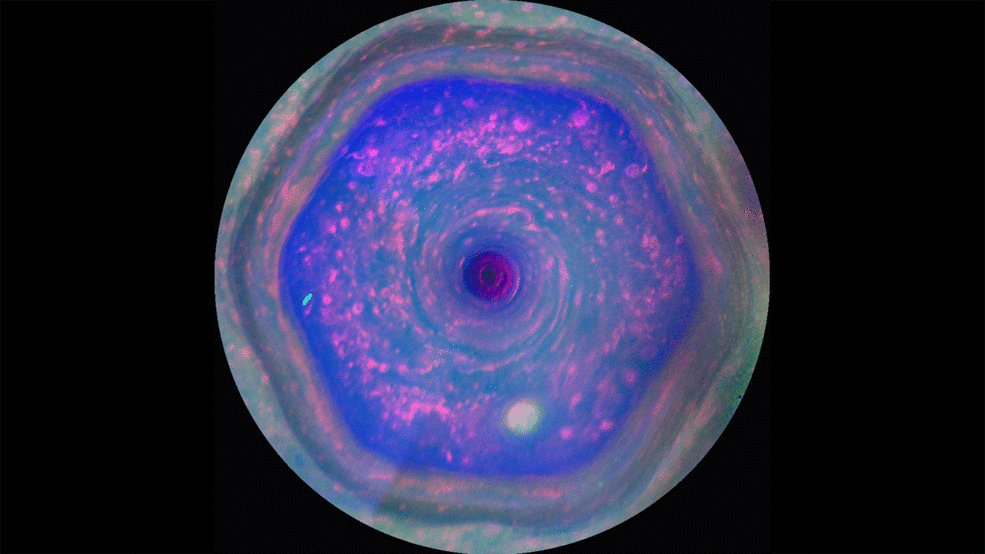Any comments, suggestions or just looking for a chat about this subject? Don't hesitate and leave a comment on our improved comment section down below the article!
This colorful view from NASA's Cassini mission is the highest-resolution view of the unique six-sided jet stream at Saturn's north pole known as "the hexagon." - Image Credit: NASA/JPL-Caltech/SSI/Hampton University
A new long-term study using data from NASA's Cassini spacecraft has revealed a surprising feature emerging at Saturn's northern pole as it nears summertime: a warming, high-altitude vortex with a hexagonal shape, akin to the famous hexagon seen deeper down in Saturn's clouds.
The finding, published Sept. 3 in Nature Communications, is intriguing, because it suggests that the lower-altitude hexagon may influence what happens above, and that it could be a towering structure hundreds of miles in height.
When Cassini arrived at the Saturnian system in 2004, the southern hemisphere was enjoying summertime, while the northern was in the midst of winter. The spacecraft spied a broad, warm high-altitude vortex at Saturn's southern pole but none at the planet's northern pole. The new study reports the first glimpses of a northern polar vortex forming high in the atmosphere, as Saturn's northern hemisphere approached summertime. This warm vortex sits hundreds of miles above the clouds, in the stratosphere, and reveals an unexpected surprise.
"The edges of this newly-found vortex appear to be hexagonal, precisely matching a famous and bizarre hexagonal cloud pattern we see deeper down in Saturn's atmosphere," said Leigh Fletcher of the University of Leicester, lead author of the new study.
Saturn's cloud levels host the majority of the planet's weather, including the pre-existing north polar hexagon. This feature was discovered by NASA's Voyager spacecraft in the 1980s and has been studied for decades; a long-lasting wave potentially tied to Saturn's rotation, it is a type of phenomenon also seen on Earth, as in the Polar Jet Stream.
Its properties were revealed in detail by Cassini, which observed the feature in multiple wavelengths -- from the ultraviolet to the infrared -- using instruments including its Composite Infrared Spectrometer (CIRS). However, at the start of the mission this instrument could not peer farther up into the northern stratosphere, where temperatures were too cold for reliable CIRS infrared observations, leaving these higher-altitude regions relatively unexplored for many years.
"The mystery and extent of the hexagon continue to grow, even after Cassini’s 13 years in orbit around Saturn," said Linda Spilker, Cassini project scientist. "I look forward to seeing other new discoveries that remain to be found in the Cassini data."
Source: NASA press release - For more on the new study, visit the European Space Agency’s story here: http://sci.esa.int/cassini-huygens/60589-saturn-s-famous-hexagon-may-tower-above-the-clouds/
If you enjoy our selection of content please consider following Universal-Sci on social media:











